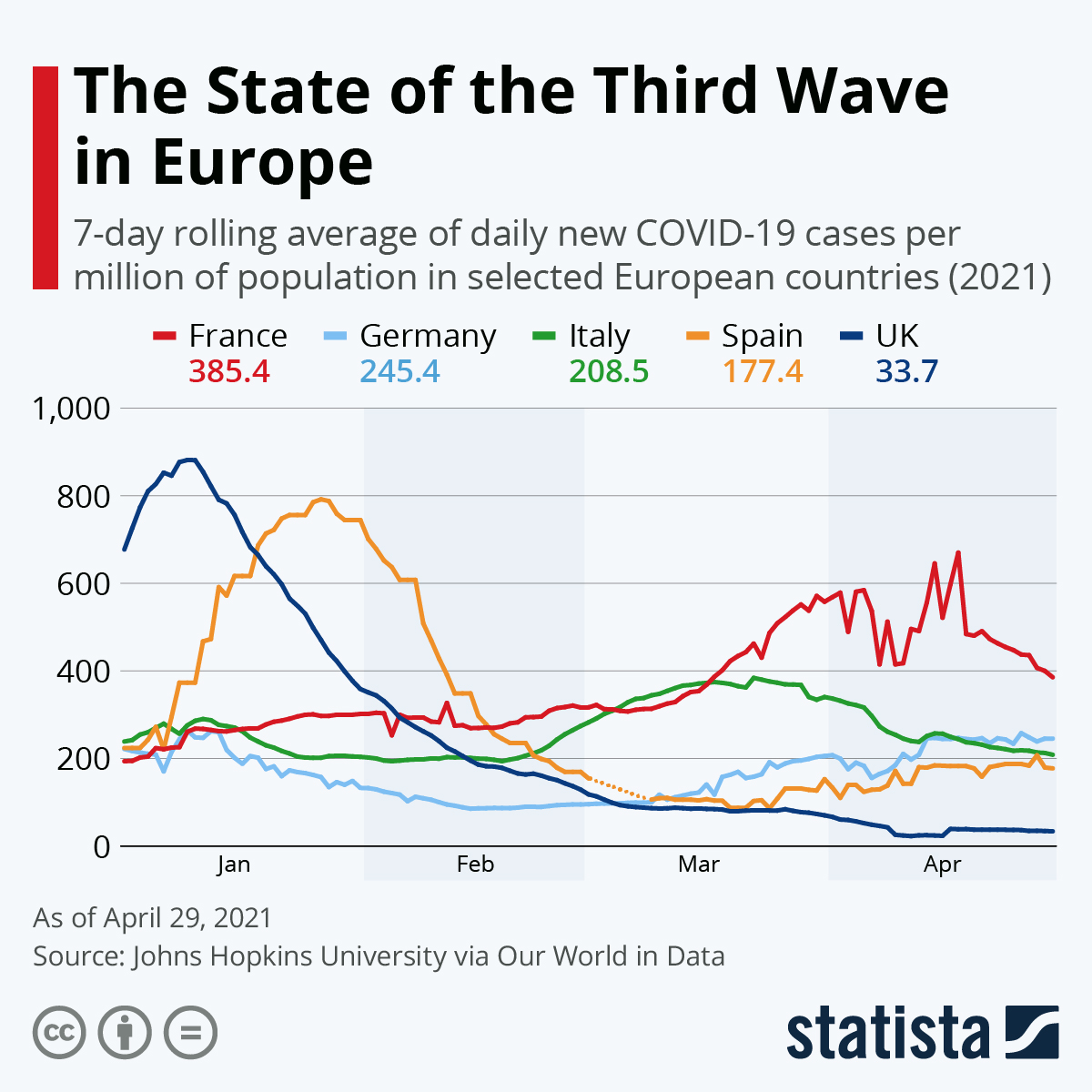Are European Countries Still ‘Flattening The Curve’?
Tyler Durden
Wed, 05/20/2020 – 01:00
Over the weekend, Russia has become the country with the second-most cumulative confirmed cases in the world after the U.S.
The country overtook Spain’s case numbers on Sunday. The global coronavirus pandemic is being contained in Western European countries, as Statista’s Katharina Buchholz shows in the infographic below, while Russia and Brazil have now confirmed more cases than many of the earlier European hot spots. Countries like Turkey or India are also on tract to produce larger outbreaks than, for example, Europe has seen.
You will find more infographics at Statista
European countries are mostly a good way into flattening the curve of COVID-19 infections. According to numbers by Johns Hopkins collected by the website Worldometers, flattening is now very visible in Germany and France, where a total of around 176,000-180,000 cases had been recorded each, as well as in Italy (225,000 cases).
The development in the UK is, on the other hand, more worrisome. Infections have not yet shown major signs of slowing down, now making the UK the country the fifth most confirmed coronavirus cases worldwide and the second-most deaths. The U.S. is currently the country with most known infections as well as deaths and has a curve of infections which is also still pointing mostly upwards. Infections have passed 1.5 million stateside.
The countries’ collective aim is to “flatten the curve” of infections. While South Korea was able to (more or less) stabilize its outbreak at around 10,000 cases – due to widespread free testing (including the now infamous drive-thru testing), quarantine measures and the harnessing of mobile technology for public information – China has stabilized theirs at around 83,000 cases. South Korea hit 100 cases on February 20 and managed to leave the steep upward trajectory around 14 days later. In the case of China, more than 100 cases were first recorded on January 20, and quarantine and testing measure succeeded in breaking the upwards trajectory by February 12 – around three and a half weeks later. Germany began leveling its curve around six weeks into the outbreak, while France started seeing results at around seven weeks.
via ZeroHedge News https://ift.tt/2Zlc1GL Tyler Durden
